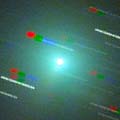
|
It reached to 7.2 mag on July 14 (Maik Meyer). It will be fading gradually after this. Now it is 9.0 mag (Aug. 13, Carlos Labordena). It is not observable already in the Northern Hemisphere. It will be unobservable for a while after mid September also in the Southern Hemipshere. After conjunction with Sun, it will appear in the morning sky in late October at 13 mag in the Southern Hemisphere, then it keeps observable while fading gradually. In the Northern Hemisphere, it will appear again at 14 mag in the very low sky at dawn in mid November. But it will be fading while keeping extremely low.
Date(TT) R.A. (2000) Decl. Delta r Elong. m1 Best Time(A, h)
Sept. 8 12 35.40 -17 26.0 1.832 1.121 32 10.0 19:09 ( 78, 14)
Sept.15 12 32.35 -19 44.5 1.968 1.175 27 10.5 19:14 ( 71, 8)
|
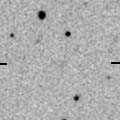
|
It will approach down to 0.4 A.U. to the sun on Oct. 28, and it is expected to reach to 6 mag. It had been unobservable for a while, now it is finally appearing in the extremely low sky at dawn. It was so faint as 17.5 mag on June 17 (Michael Jager), however, now it is already very bright as 11 mag (Sept. 14, Michael Jager and Gerald Rhemann). However, the condition in the Northern Hemisphere is very hard. It locates extremely low, slightly over the horizon in the morning sky, from late September to mid October, then it will never be observable again. In the Southern Hemisphere, it will appear in the evening sky at 7 mag in early November, then it keeps observable while fading gradually, although it will not locate very high.
Date(TT) R.A. (2000) Decl. Delta r Elong. m1 Best Time(A, h)
Sept. 8 11 12.83 28 11.6 2.100 1.229 22 13.0 19:09 (106,-28)
Sept.15 11 25.94 28 11.3 1.929 1.101 24 12.3 4:36 (255,-30)
|

|
It reached to 13.2 mag in last spring (May 12, Carlos Labordena). But now it is not observable. In the Southen Hemisphere, it will be observable again at 15 mag in November. But in the Northern Hemisphere, it will never observable again.
Date(TT) R.A. (2000) Decl. Delta r Elong. m1 Best Time(A, h)
Sept. 8 10 56.82 -5 2.2 2.883 1.905 11 13.5 4:46 (283,-10)
Sept.15 11 11.74 -7 47.6 2.908 1.935 11 13.6 4:36 (285, -8)
|

|
Although it has been observable since late July, it keeps faint in this season. It was 14.4 mag on Aug. 4 (Ken-ichi Kadota), but nobody reported it brighter than 14 mag so far.
Date(TT) R.A. (2000) Decl. Delta r Elong. m1 Best Time(A, h)
Sept. 8 6 18.06 30 6.1 6.195 5.945 71 13.8 4:46 (212, 16)
Sept.15 6 21.49 30 8.6 6.091 5.947 77 13.7 4:36 (210, 18)
|

|
It will reach to 11 mag in 2008 spring. It will keep bright for a long time, however, it keeps moving in the southern sky for a while after this. No observations have been reported since late May, but it keeps observable in good condition until 2008 summer in the Southern Hemisphere. In the Northern Hemisphere, it will appear at 13 mag in November in a short time, but very low and hard to observe. However, it will be visible visually at 11 mag in the evening sky from March to June in 2008. Then it becomes unobservable again. But it will appear in the morning sky again at 13 mag at the end of 2008, then it keeps bright and observable for a while.
Date(TT) R.A. (2000) Decl. Delta r Elong. m1 Best Time(A, h)
Sept. 8 8 6.50 -31 13.1 4.535 4.065 56 14.2 4:46 (285, 38)
Sept.15 8 15.77 -32 9.4 4.459 4.017 57 14.1 4:36 (285, 40)
|

|
Now it is bright and visible visually at 13.2 mag (Sept. 10, Juan Jose Gonzalez). It will be observable in very good condition at 13-14 mag until autumn.
Date(TT) R.A. (2000) Decl. Delta r Elong. m1 Best Time(A, h)
Sept. 8 0 18.13 -9 15.1 1.308 2.286 161 14.2 1:13 (180, 64)
Sept.15 0 15.22 -10 28.4 1.299 2.290 166 14.2 0:42 (180, 65)
|
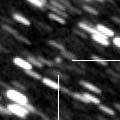
|
Now it is 15.8 mag (Sept. 2, R. Salvo). It keeps 15 mag for a long time until 2008 spring. It moves in the southen sky, so it keeps observable in good condition in the Southern Hemisphere, although it becomes low only in winter. It will never be observable again in the Northern Hemisphere.
Date(TT) R.A. (2000) Decl. Delta r Elong. m1 Best Time(A, h)
Sept. 8 17 10.83 -57 24.3 3.025 3.285 95 14.6 19:09 ( 21, 65)
Sept.15 17 2.16 -57 23.9 3.127 3.270 89 14.6 19:14 ( 31, 61)
|
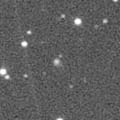
|
It is already bright and visible visually at 13.8 mag (Sept. 9, Juan Jose Gonzalez). It will reach to 10.5 mag and will be observable in good condition in 2008 autumn. It keeps observable in good condition for a long time while the comet is getting brighter slowly.
Date(TT) R.A. (2000) Decl. Delta r Elong. m1 Best Time(A, h)
Sept. 8 21 29.35 -8 20.7 3.596 4.537 156 14.6 22:20 (180, 63)
Sept.15 21 25.13 -8 16.4 3.592 4.482 148 14.6 21:48 (180, 63)
|
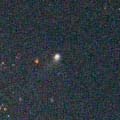
|
Now it is bright and visible visually at 13.8 mag (Sept. 8, Carlos Labordena). It had been observable in good conditoin for a long time since spring, but it will be getting lower and lower after this, and will be unobservable in November. But it will be observable at 14 mag at high location again in 2008 spring.
Date(TT) R.A. (2000) Decl. Delta r Elong. m1 Best Time(A, h)
Sept. 8 16 49.57 -1 8.3 5.645 5.673 86 14.9 19:09 (144, 50)
Sept.15 16 47.80 -1 8.2 5.758 5.665 79 14.9 19:14 (133, 46)
|

|
Brightening rapidly. Now it is 14.3 mag (Sept. 10, Juan Jose Gonzalez). It is brightening rather faster than this ephemeris, and already visible visually. It is observable at 13.5 mag in good condition from autumn to winter.
Date(TT) R.A. (2000) Decl. Delta r Elong. m1 Best Time(A, h)
Sept. 8 1 2.08 16 23.8 1.080 1.982 143 15.6 1:56 (180, 39)
Sept.15 1 0.37 17 52.8 1.015 1.948 149 15.2 1:27 (180, 37)
|

|
Now it is 16.0 mag (Aug. 12, Ken-ichi Kadota), brightening as expected. It will reach to 14 mag in next winter, and will be observable in good condition. It is expected to be visible visually. It keeps observable in good condition for a long time until 2008 spring.
Date(TT) R.A. (2000) Decl. Delta r Elong. m1 Best Time(A, h)
Sept. 8 6 22.46 27 36.3 2.983 2.802 69 15.3 4:46 (215, 18)
Sept.15 6 34.23 27 17.0 2.879 2.778 74 15.2 4:36 (214, 19)
|
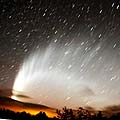
|
Excellent great comet, few times in a lifetime, for southern people. It reached to -5.5 mag on Jan. 14 and 15, brighter than Venus, and visible even in daytime. Then it appeared in the evening sky in the Southern Hemisphere and many people enjoyed a fantastic view of a beautiful great comet, a enormous curving tail with so many striae over 50 degrees. No visual observations have been reported after it was observed as 12.6 mag on July 6 (Walter Ruben Robledo). It seems to have already faded down to 15 mag. In the Southern Hemisphere, It keeps observable almost all night until the comet has gone. It will never be observable again in the Northern Hemisphere.
Date(TT) R.A. (2000) Decl. Delta r Elong. m1 Best Time(A, h)
Sept. 8 14 7.20 -60 58.8 4.193 4.064 75 15.2 19:09 ( 36, 43)
Sept.15 14 18.86 -60 26.1 4.350 4.146 71 15.5 19:14 ( 37, 41)
|
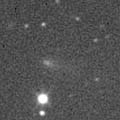
|
It was bright as 14.5 mag in July (July 16, Michael Jager). But now it is 15.4 mag (Aug. 26, Ken-ichi Kadota), getting a bit fainter. It keeps observable in excellent condition while getting fainter gradually until January when it becomes fainter than 18 mag.
Date(TT) R.A. (2000) Decl. Delta r Elong. m1 Best Time(A, h)
Sept. 8 3 49.73 42 41.0 1.881 2.274 99 15.4 4:44 (180, 12)
Sept.15 3 55.47 44 6.6 1.832 2.297 104 15.5 4:22 (180, 11)
|
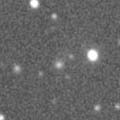
|
It was observed at 16 mag in 2007 spring and summer. Now it is not observable. In the Southern Hemisphere, it will appear again at 16 mag in winter, then it keeps 16 mag and observable in good condition until 2008 summer. In the Northern Hemisphere, it will never be observable again.
Date(TT) R.A. (2000) Decl. Delta r Elong. m1 Best Time(A, h)
Sept. 8 12 9.53 -20 12.1 3.620 2.801 30 15.5 19:09 ( 72, 10)
Sept.15 12 20.96 -21 50.5 3.626 2.780 28 15.4 19:14 ( 68, 7)
|

|
Now it is 15.9 mag (Sept. 8, Ken-ichi Kadota), brightening as expected. It will reach to 13.5 mag in the southern sky in 2008 spring and summer. In the Southern Hemisphere, it keeps observable for a long time after this. However, it is only observable until autumn in the Northern Hemisphere, when the comet brightens up to 15 mag. Then it will be observable again at the end of 2008, when the comet will already fade down to 15 mag.
Date(TT) R.A. (2000) Decl. Delta r Elong. m1 Best Time(A, h)
Sept. 8 1 31.67 -26 31.3 2.950 3.772 139 15.6 2:26 (180, 81)
Sept.15 1 27.84 -29 8.0 2.878 3.722 141 15.5 1:55 (180, 84)
|

|
It passed near by the earth in early April, and reached to 8.7 mag (Apr. 10, Werner hasubick). Then it faded down to 11.8 mag on May 26 (Seiichi Yoshida), and became too low to observe in the evening. Now it is 15.2 mag (Aug. 10, Ken-ichi Kadota), fading as expected.
Date(TT) R.A. (2000) Decl. Delta r Elong. m1 Best Time(A, h)
Sept. 8 6 45.82 28 3.0 2.209 2.001 64 15.6 4:46 (219, 15)
Sept.15 6 36.88 28 37.9 2.117 2.073 73 15.9 4:36 (213, 18)
|
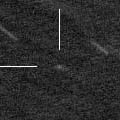
|
Now it is 17.0 mag (Sept. 8, Ken-ichi Kadota). It keeps observable in good condition until it fades out in 2008 spring. It is expected to reach to 15 mag in autumn, however, recent reports are fainter than this ephemeris by 1 mag.
Date(TT) R.A. (2000) Decl. Delta r Elong. m1 Best Time(A, h)
Sept. 8 2 35.89 28 5.5 1.293 1.985 118 15.8 3:30 (180, 27)
Sept.15 2 39.45 30 29.6 1.228 1.971 123 15.7 3:06 (180, 25)
|

|
First return of a new periodic comet discovered in 1998 at 14 mag. Now it is 15.6 mag (Sept.. 10, Mt. Lemmon Survey), brightened as expected. It keeps observable at 16 mag in good condition until December.
Date(TT) R.A. (2000) Decl. Delta r Elong. m1 Best Time(A, h)
Sept. 8 0 20.66 1 47.2 1.675 2.642 159 15.8 1:15 (180, 53)
Sept.15 0 16.12 1 53.5 1.640 2.630 167 15.7 0:43 (180, 53)
|
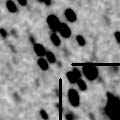
|
It will reach to 6 mag in January, and will be observable in good condition. Now it is 16.6 mag (Sept. 8, C. Rinner and F. Kugel). Brightening rapidly, and it will become visible visually in October. In the Northern Hemipshere, it keeps observable until early February, when it fades down to 7.5 mag. In the Southern Hemipshere, it is not observable until late December. But after that, it keeps observable until it fades out.
Date(TT) R.A. (2000) Decl. Delta r Elong. m1 Best Time(A, h)
Sept. 8 2 36.20 81 50.7 1.948 2.178 88 16.2 3:30 (180,-27)
Sept.15 3 2.53 83 48.6 1.843 2.106 90 15.8 3:29 (180,-29)
|

|
Although it had been observable only in the Southern Hemisphere for a long time, now it becomes observable also in the Northern Hemisphere. It keeps 16 mag until winter. It was reported as 18 mag in August, much fainter than this ephemeris.
Date(TT) R.A. (2000) Decl. Delta r Elong. m1 Best Time(A, h)
Sept. 8 3 52.01 -29 12.7 4.018 4.444 108 16.0 4:46 (180, 84)
Sept.15 3 51.49 -29 27.5 3.961 4.449 112 16.0 4:18 (180, 84)
|

|
Now it is 16.6 mag (Aug. 25, Ken-ichi Kadota). It will reach to 12 mag in 2008 summer. In the Northern Hemisphere, it keeps observable almost all time until that while the comet is brightening gradually. However, it goes to the southern sky and will never be observable again in the Northern Hemisphere after that.
Date(TT) R.A. (2000) Decl. Delta r Elong. m1 Best Time(A, h)
Sept. 8 16 32.56 20 48.4 5.090 5.023 80 16.0 19:09 (152, 29)
Sept.15 16 33.03 19 16.6 5.124 4.970 75 16.0 19:14 (143, 27)
|

|
It reached up to 15.5 mag in late 2006 and early 2007. Now it is fading, 16.3 mag (Sept. 7, Ken-ichi Kadota). It locates somewhat low in the south, but it is observable at 16.5 mag in autumn. It will be too low to observe in early 2008, when the comet will be fainter than 17.5 mag.
Date(TT) R.A. (2000) Decl. Delta r Elong. m1 Best Time(A, h)
Sept. 8 4 31.44 -27 12.2 3.915 4.209 100 16.2 4:46 (229, 79)
Sept.15 4 24.47 -28 35.1 3.846 4.232 105 16.2 4:36 (206, 83)
|

|
Now it is 16.8 mag (Aug. 8, Ken-ichi Kadota). Before the perihelion passage, it kept 16.5-17 mag and hardly brightened. After the perihelion passage, it seems hardly to be fading.
Date(TT) R.A. (2000) Decl. Delta r Elong. m1 Best Time(A, h)
Sept. 8 4 5.95 45 12.4 2.875 3.142 95 16.3 4:46 (182, 10)
Sept.15 3 59.19 47 42.5 2.814 3.186 102 16.3 4:26 (180, 7)
|

|
It faded down to 16.5 mag on Apr. 9 (Ken-ichi Kadota). No observations have been reported since June. However, the fading is slow. The comet will be fainter than 18 mag in 2008. In the Northern Hemisphere, it keeps observable until that time.
Date(TT) R.A. (2000) Decl. Delta r Elong. m1 Best Time(A, h)
Sept. 8 6 0.25 65 39.7 3.910 3.844 78 16.3 4:46 (193,-14)
Sept.15 5 57.01 66 3.3 3.876 3.904 84 16.4 4:36 (191,-13)
|

|
It already locates high in the morning sky, however, no observations have been reported since January. It must have already brightened up to 16.5 mag. It tends to be brightest after the perihelion passage. It will be observable in good condition at 16 mag until winter.
Date(TT) R.A. (2000) Decl. Delta r Elong. m1 Best Time(A, h)
Sept. 8 6 42.32 20 5.6 3.395 3.106 64 16.3 4:46 (223, 22)
Sept.15 6 50.74 19 47.2 3.313 3.112 69 16.3 4:36 (221, 23)
|
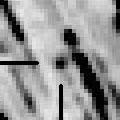
|
Now it is 16.8 mag (Aug. 12, Ken-ichi Kadota). It will be fading gradually after this, and will be fainter than 18 mag in October.
Date(TT) R.A. (2000) Decl. Delta r Elong. m1 Best Time(A, h)
Sept. 8 19 7.06 -25 43.2 2.405 3.039 120 16.5 19:59 (180, 81)
Sept.15 19 11.17 -26 24.0 2.509 3.062 114 16.6 19:35 (180, 81)
|

|
Now it is 17.6 mag (Aug. 30, P. Birtwhistle). It is expected to reach to 11 mag in 2009 summer. Because it moves in the northern sky, it keeps observable until it becomes brightest in the Northern Hemipshere.
Date(TT) R.A. (2000) Decl. Delta r Elong. m1 Best Time(A, h)
Sept. 8 6 36.11 52 46.1 6.927 6.676 71 16.6 4:46 (203, -5)
Sept.15 6 37.24 53 31.0 6.776 6.628 77 16.6 4:36 (201, -4)
|

|
Now it is 17.1 mag (Aug. 10, Ken-ichi Kadota). It will reach to 16 mag in autumn, and will be observable in good condition.
Date(TT) R.A. (2000) Decl. Delta r Elong. m1 Best Time(A, h)
Sept. 8 3 1.78 3 14.6 1.349 2.048 120 16.8 3:56 (180, 52)
Sept.15 3 6.28 3 0.7 1.294 2.048 125 16.7 3:33 (180, 52)
|
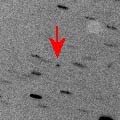
|
Although it was so faint as 18.2 mag on Aug. 10 (Ken-ichi Kadota), it will brighten very rapidly in a short time and reach to 15 mag in October. It will be observable at 14.5-15 mag in an excellent condition from October to February.
Date(TT) R.A. (2000) Decl. Delta r Elong. m1 Best Time(A, h)
Sept. 8 5 2.78 32 43.5 2.495 2.643 87 17.0 4:46 (196, 20)
Sept.15 5 11.53 33 0.6 2.395 2.629 91 16.7 4:36 (194, 20)
|

|
Now it is 17.2 mag (Aug. 12, Ken-ichi Kadota). It will be observable at 17 mag for a long time until 2008 autumn.
Date(TT) R.A. (2000) Decl. Delta r Elong. m1 Best Time(A, h)
Sept. 8 19 25.22 17 26.2 5.277 5.861 121 16.8 20:16 (180, 38)
Sept.15 19 20.64 17 15.0 5.364 5.865 115 16.8 19:44 (180, 38)
|
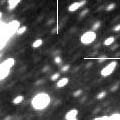
|
Now it is 17.4 mag (Aug. 9, Ken-ichi Kadota). It is outside of Jupiter's orbit. So it keeps 17 mag for a long time until winter. It keeps locating high and observable in good condition for a long time after this because it moves in the northern sky.
Date(TT) R.A. (2000) Decl. Delta r Elong. m1 Best Time(A, h)
Sept. 8 3 13.02 34 53.4 3.564 4.003 108 17.0 4:07 (180, 20)
Sept.15 3 12.85 34 14.8 3.495 4.032 115 16.9 3:39 (180, 21)
|

|
Appearing in the morning sky, and observed at 16.7 mag as bright as expected (July 24, E. Guido, G. Sostero). It will be getting higher after this. But it will be fading gradually and becomes fainter than 18 mag in October.
Date(TT) R.A. (2000) Decl. Delta r Elong. m1 Best Time(A, h)
Sept. 8 7 17.06 27 1.6 2.110 1.790 57 17.2 4:46 (225, 11)
Sept.15 7 35.19 27 10.8 2.075 1.809 60 17.3 4:36 (225, 11)
|

|
It will be at opposition and observable in good condition in winter. It will reach to 16 mag.
Date(TT) R.A. (2000) Decl. Delta r Elong. m1 Best Time(A, h)
Sept. 8 7 24.95 21 30.6 4.845 4.349 55 17.3 4:46 (230, 14)
Sept.15 7 31.35 21 29.8 4.748 4.342 60 17.3 4:36 (228, 16)
|

|
It will reach to 15 mag in 2009 and 2010. In this year, it is observable at 16.5 mag in good condition in autumn and winter.
Date(TT) R.A. (2000) Decl. Delta r Elong. m1 Best Time(A, h)
Sept. 8 5 23.27 22 3.5 4.151 4.157 83 17.5 4:46 (204, 29)
Sept.15 5 27.14 22 10.7 4.037 4.149 89 17.4 4:36 (201, 30)
|
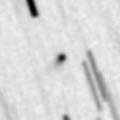
|
It passed very close to the earth in July and reach to 15.5 mag (July 16, Michael Jager). But it is fading out rapidly after August. It has already faded down to 18 mag in early September.
Date(TT) R.A. (2000) Decl. Delta r Elong. m1 Best Time(A, h)
Sept. 8 19 33.70 32 5.7 0.467 1.289 117 17.4 20:26 (180, 23)
Sept.15 19 51.42 32 5.6 0.516 1.325 117 17.8 20:16 (180, 23)
|

|
Now it is 17.7 mag (Sept. 9, Ken-ichi Kadota). It will be brighter than 18 mag until November.
Date(TT) R.A. (2000) Decl. Delta r Elong. m1 Best Time(A, h)
Sept. 8 23 59.00 -8 58.2 1.982 2.970 166 17.6 0:54 (180, 64)
Sept.15 23 55.26 -9 45.5 1.970 2.967 170 17.6 0:22 (180, 65)
|
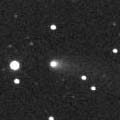
|
It reached to 13.5 mag and became visible visually in 2005 and 2006. Now it has gone far away. But it is observable at 17.5 mag until November.
Date(TT) R.A. (2000) Decl. Delta r Elong. m1 Best Time(A, h)
Sept. 8 2 29.23 8 45.0 3.389 4.073 126 17.6 3:23 (180, 46)
Sept.15 2 27.52 8 36.3 3.325 4.089 134 17.6 2:54 (180, 46)
|
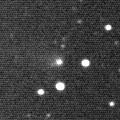
|
It was observed bright as 14-15 mag in 2004 and 2005. Now it is close to the aphelion, but it will be observable at 17.5 mag in good condition in 2007 autumn.
Date(TT) R.A. (2000) Decl. Delta r Elong. m1 Best Time(A, h)
Sept. 8 3 24.76 6 44.7 4.288 4.785 113 17.8 4:19 (180, 48)
Sept.15 3 24.18 6 35.1 4.205 4.795 120 17.7 3:51 (180, 48)
|
|
![]()
 P/2007 H1 ( McNaught )
P/2007 H1 ( McNaught ) C/2006 K4 ( NEAT )
C/2006 K4 ( NEAT ) C/2006 OF2 ( Broughton )
C/2006 OF2 ( Broughton ) C/2005 L3 ( McNaught )
C/2005 L3 ( McNaught ) 93P/Lovas 1
93P/Lovas 1 C/2006 S5 ( Hill )
C/2006 S5 ( Hill ) C/2006 P1 ( McNaught )
C/2006 P1 ( McNaught ) 17P/Holmes
17P/Holmes C/2006 V1 ( Catalina )
C/2006 V1 ( Catalina ) C/2006 U6 ( Spacewatch )
C/2006 U6 ( Spacewatch ) C/2007 E1 ( Garradd )
C/2007 E1 ( Garradd ) 50P/Arend
50P/Arend 188P/2007 J7 ( LINEAR-Mueller )
188P/2007 J7 ( LINEAR-Mueller ) 8P/Tuttle
8P/Tuttle C/2006 K1 ( McNaught )
C/2006 K1 ( McNaught ) C/2007 G1 ( LINEAR )
C/2007 G1 ( LINEAR ) C/2005 EL173 ( LONEOS )
C/2005 EL173 ( LONEOS ) C/2006 K3 ( McNaught )
C/2006 K3 ( McNaught ) C/2006 L2 ( McNaught )
C/2006 L2 ( McNaught ) 128P/Shoemaker-Holt 1
128P/Shoemaker-Holt 1 C/2007 O1 ( LINEAR )
C/2007 O1 ( LINEAR ) C/2006 W3 ( Christensen )
C/2006 W3 ( Christensen ) 191P/2007 N1 ( McNaught )
191P/2007 N1 ( McNaught ) 110P/Hartley 3
110P/Hartley 3 C/2005 S4 ( McNaught )
C/2005 S4 ( McNaught ) C/2006 M1 ( LINEAR )
C/2006 M1 ( LINEAR ) 108P/Ciffreo
108P/Ciffreo 173P/2005 T1 ( Mueller 5 )
173P/2005 T1 ( Mueller 5 ) 74P/Smirnova-Chernykh
74P/Smirnova-Chernykh 189P/2007 N2 ( NEAT )
189P/2007 N2 ( NEAT ) 136P/Mueller 3
136P/Mueller 3 117P/Helin-Roman-Alu 1
117P/Helin-Roman-Alu 1 P/2004 F3 ( NEAT )
P/2004 F3 ( NEAT )![]()

























